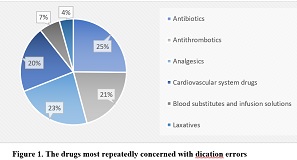ANALYSIS OF COMPLIANCE OF EAR PROTECTOR USAGE ON THE PREVENTION OF NOISE INDUCE HEARING LOSS AT STERILIZATION INSTALLATION
Versions
- 2024-02-15 (2)
- 2021-06-30 (1)

Downloads
Noise Induce Hearing Loss (NIHL) is a work disease that is often found in industrial workers. The use of ear protectors that are in accordance with the standard along with the continuity of optimal use can reduce the risk of hearing loss due to noise in the workplace. Adherence to use ear protectors greatly affect the possibility of a person experiencing a more severe hearing loss. The purpose of this study is to prove the existence of relationship of compliance with the use of ear protectors with hearing loss due to noise in the installation of sterilization and laundry. This study used cross sectional methods. Seventeen samples were taken by consecutive sampling for audiometry examination and measurement of compliance with the use of Ear Protective Equipment. Respondents received an average score of 1.86 indicating that compliance with the use of ear protectors was sufficient. Based on the results of the measurement of the auditory threshold in 17 respondents as many as 4 respondents (23%) normal hearing and as many as 13 respondents (77%) experienced NIHL. The results of statistical tests with Pearson correlation show that the Pearson correlation coefficient number of -0.643, which means that the correlation between compliance variables with noise due to noise is 0.643. Based on the criteria above, the relationship between the two variables is significant because the number of significance is P-value / Sig 0.005 <0.05. So, there is a relation between years of work with Noise Induce Hearing Loss, education and Noise Induce Hearing Loss, and compliance with the use of ear protectors with NIHL
Agarwal G, Nagpure PS, Gadge SV (2016). Noise induced hearing loss in steel factory workers. Int J Occup Saf Health, 4(2), 34-43
Fuente A, Hickson L (2011). Noise-induced hearing loss in Asia. Int J Audiol, 50(Sup 1), S3-S10
Kotarbinska E, Kozlowski E (2009). Measurement of effective noise exposure of workers wearing ear-muffs. Int J Occup Saf Ergon, 15(2), 193-200
Feder K, Michaud D, McNamee J, et al (2017). Prevalence of Hazardous Occupational Noise Exposure, Hearing Loss, and Hearing Protection Usage Among a Representative Sample of Working Canadians. J Occup Environ Med, 59(1), 92-113
Mohammadi G (2014). Occupational Noise Pollution and Hearing protection in selected industries. Iran J Health Saf Environ, Corpus ID: 56567312
Rangkooy HA, Rashnuodi P, Salehy MMA, et al (2018). Evaluation of Noise-Induced Hearing Loss on the Workers of one of the Ahvaz Steel Companies. Jundishapur J Health Sci, 10(1), e14258
Wictor IC, Xavier AA (2018). Noise perception and hearing protector use in metallurgical industries. Int J Occup Environ Saf, 2(1), 18-28
Royster JD (2017). Preventing Noise-Induced Hearing Loss. N C Med J, 78(2), 113-117
Musiba Z (2015). The prevalence of noise-induced hearing loss among Tanzanian miners. Occup Med, 65(5), 386-390
Copyright (c) 2021 Rosydiah Rahmawati, Nyilo Purnami, Makhmudyah Indri Cahyani

This work is licensed under a Creative Commons Attribution-ShareAlike 4.0 International License.
- The journal allows the author to hold the copyright of the article without restrictions.
- The journal allows the author(s) to retain publishing rights without restrictions.
- The legal formal aspect of journal publication accessibility refers to Creative Commons Attribution Share-Alike (CC BY-SA).
- The Creative Commons Attribution Share-Alike (CC BY-SA) license allows re-distribution and re-use of a licensed work on the conditions that the creator is appropriately credited and that any derivative work is made available under "the same, similar or a compatible license”. Other than the conditions mentioned above, the editorial board is not responsible for copyright violation.































